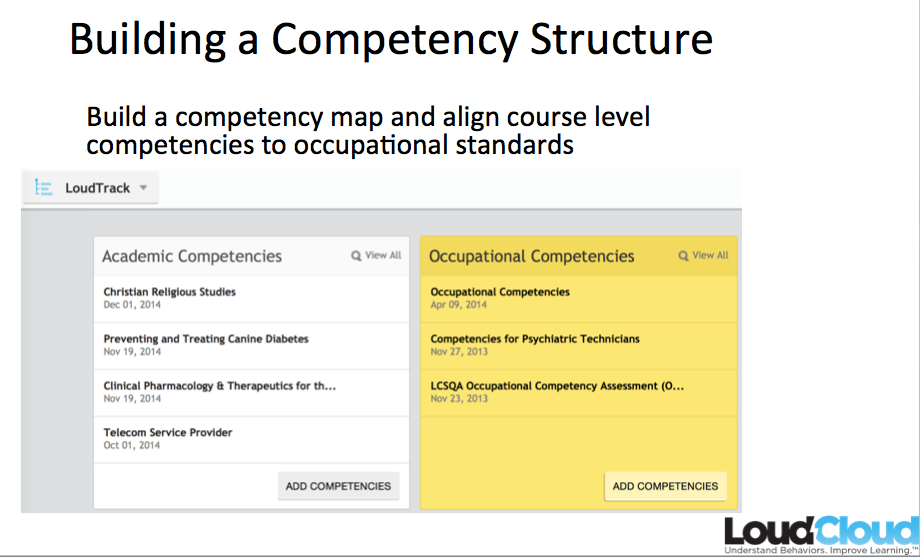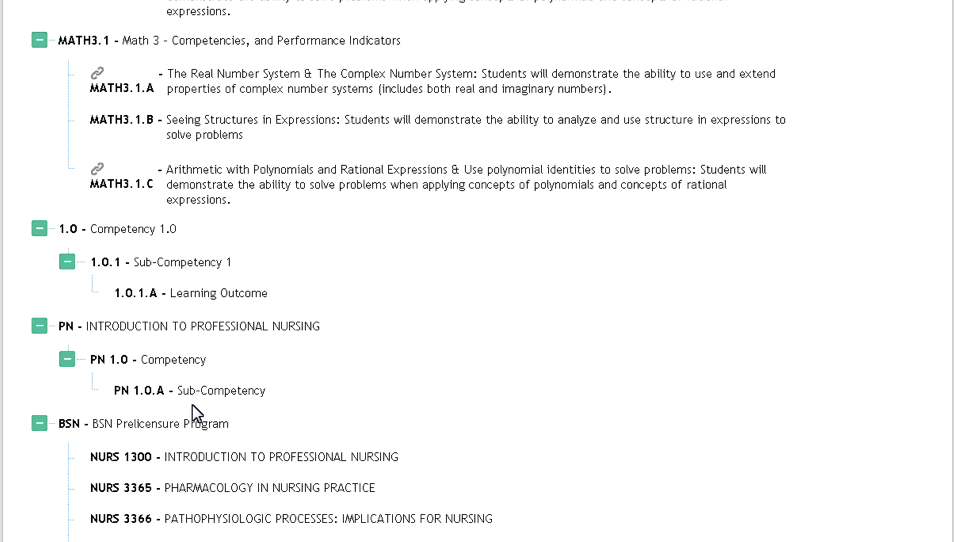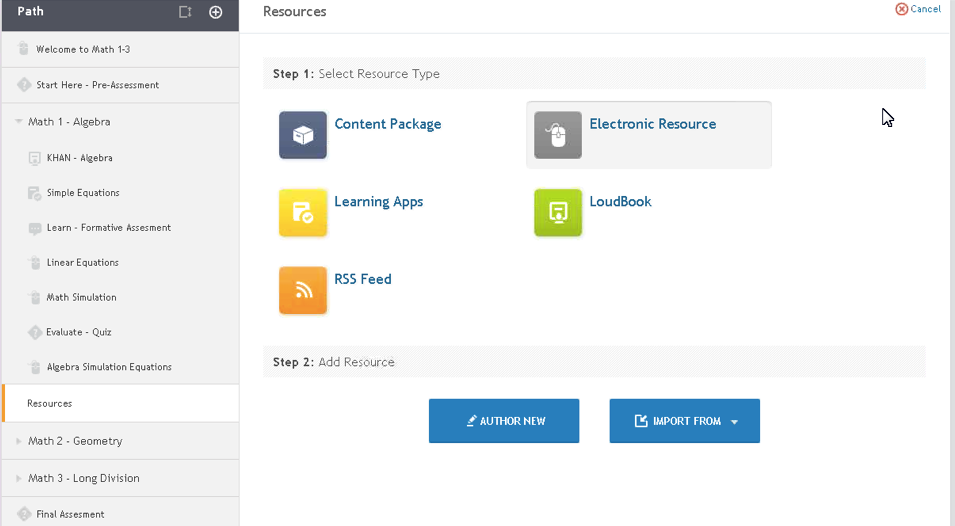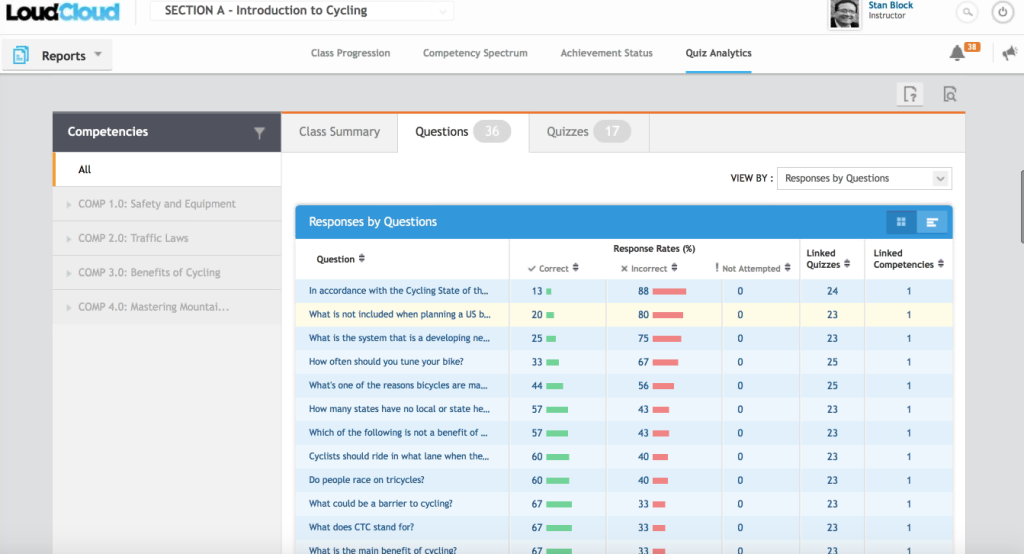As competency-based education (CBE) becomes more and more important to US higher education, it would be worth exploring the learning platforms in use. While there are cases of institutions using their traditional LMS to support a CBE program, there is a new market developing specifically around learning platforms that are designed specifically for self-paced, fully-online, competency-framework based approaches.
Recently I saw a demo of the new CBE platform from LoudCloud Systems, a company whose traditional LMS I have covered a few years ago. The company is somewhat confusing to me – I had expected a far larger market impact from them based on their product design than what has happened in reality. LoudCloud has recently entered the CBE market, not by adding features to their core LMS but by creating a new product called FASTRAK. Like Instructure with their creation of a new LMS for a different market (corporate learning), LoudCloud determined that CBE called for a new design and that the company can handle two platforms for two mostly distinct markets. In the case of Bridge and FASTRAK, I believe the creation of a new learning platform took approximately one year (thanks a lot, Amazon). LoudCloud did leverage several of the traditional LMS tools such as rubrics, discussion forums and their LoudBook interactive eReader.
As was the case for the description of the Helix CBE-based learning platform and the description of FlatWorld’s learning platform, my interest here is not merely to review one company’s products, but rather to illustrate aspects of the growing CBE movement using the demo.
LoudCloud’s premier CBE partner is the University of Florida’s Lastinger Center, a part of the College of Education that provides professional development for Florida’s 55,000 early learning teachers. They have or expect to have more than a dozen pilot programs for CBE in place during the first half of 2015.
Competency Framework
Part of the reason for developing a new platform is that FASTRAK appears to be designed around a fairly comprehensive competency framework embodied in LoudTrack – an authoring tool and competency repository. This framework allows the school to combine their own set of competencies along with externally-defined job-based competencies such as O*NET Online.
The idea is to (roughly in order):
- Develop competencies;
- Align to occupational competencies;
- Define learning objectives;
- Develop assessments; and
- Then design academic programs.
One question within CBE design is what is the criteria for mastery within a specific competency – passing some, most, all of the sub-competencies? FASTRAK allows this decision to be set by program configuration.
Many traditional academic programs have learning outcomes, but a key differentiator for a CBE program is having some form of this competency framework and up-front design.
A unique feature (at least unique that I’ve seen so far) is FASTRAK’s ability to allow faculty to set competencies at an individual course level, provided in a safe area that stay outside of the overall competency repository unless reviewed and approved.
The program or school can also group together specific competencies to define sub-degree certificates.
Course Design Beyond Walled Garden
At the recent Instructional Technology Council (ITC) eLearning 2015 conference, I presented a view of the general ed tech market moving beyond the walled garden approach. As part of this move, however, I described that the walled garden will likely live on within top-down designs of specific academic programs such as many (if not most) of the CBE pilots underway.
Now it's clear what's the role @PhilOnEdTech gives to #LMS when he talks about a new "walled garden" age. #LTI +1 pic.twitter.com/DXgdjctHto
— Toni Soto (@ToniSoto_Vigo) February 22, 2015
What FASTRAK shows, however, is that CBE does not require a walled garden approach. Keep in mind the overall approach of starting with the competency framework through assessments and then academic program design. In this last area FASTRAK allows several approaches to bringing in pre-existing content and separate applications.
The system, along with current version of LoudBooks, is LTI as well as SCORM compliant and uses this interoperability to give choices to faculty. Remember that FlatWorld prides themselves on deeply integrating content, mostly their own, into the platform. While they can bring in outside content like OER, it is the FlatWorld designers who have to do this work. LoudCloud, by contrast, puts this choice in the hands of faculty. Two very different approaches.
FASTRAK does provide a fairly impressive set of reports to see how students are doing against the competencies, which should help faculty and program designers to see where students are having problems or where the course designs need improving.
CBE-Light
An interesting note from the demo and conversation is that LoudCloud claims that half of their pilots are CBE-light, where schools want to try out competencies at the course level but not at the program level. This approach allows them to avoid the need for regulatory approval.
While I have already called out the basics of what CBE entails in this primer, I have also seen a lot of watering down or alteration of the CBE terminology. Steven Mintz from the University of Texas recently published an article at Inside Higher Ed that calls out CBE 2.0 in his terms, where they are trying approaches that are not fully online or even self-paced. This will be a topic for a future post on what really qualifies as CBE and where are people just co-opting the terminology.






[…] Phil’s multiple reviews of Competency-Based Education (CBE) “LMSs”, one of the implications that jumps […]